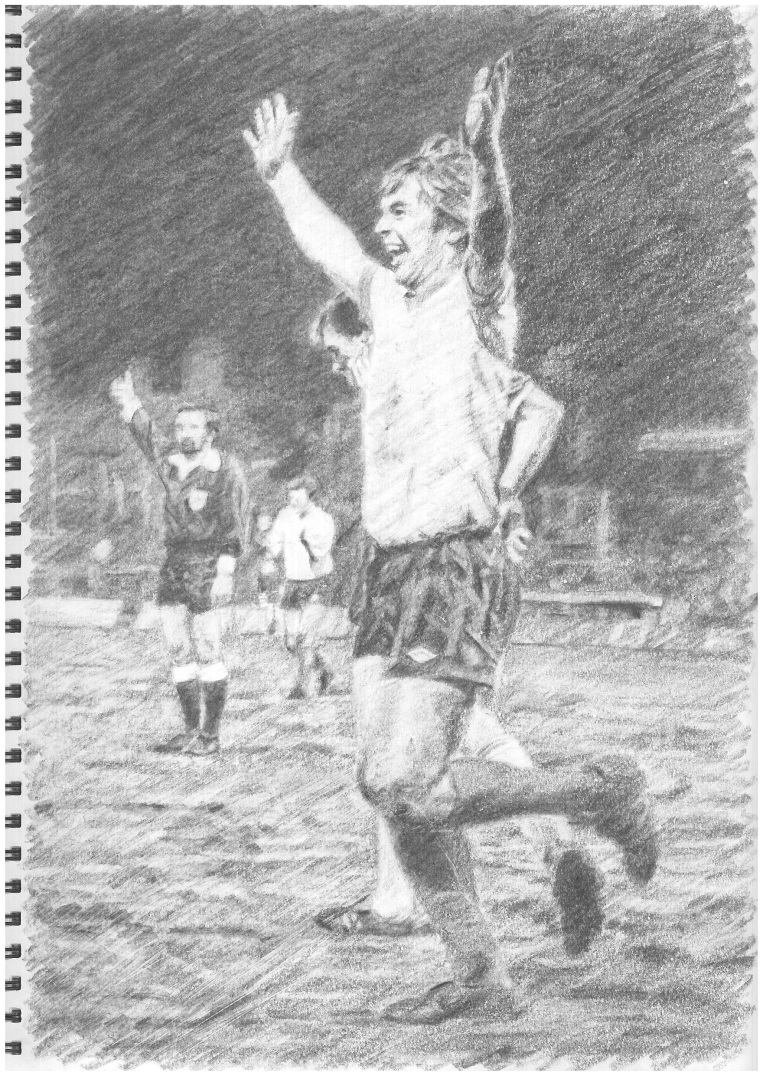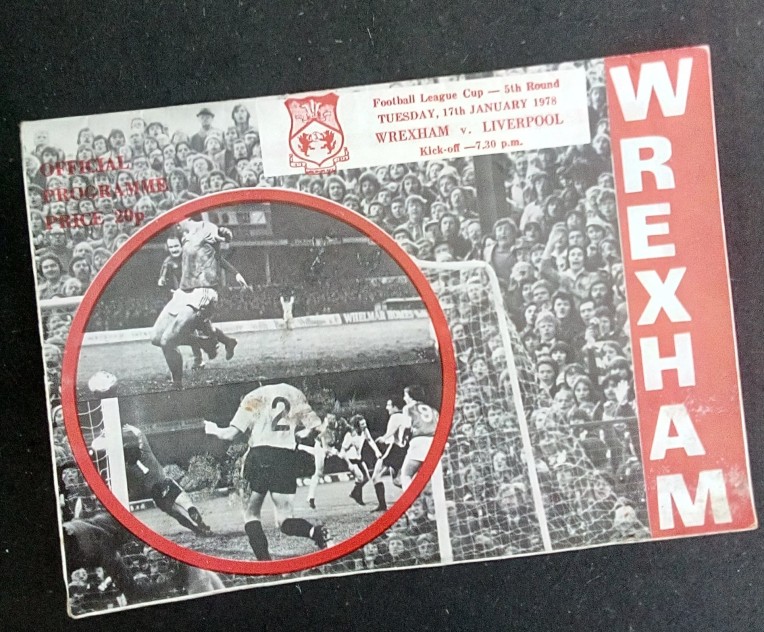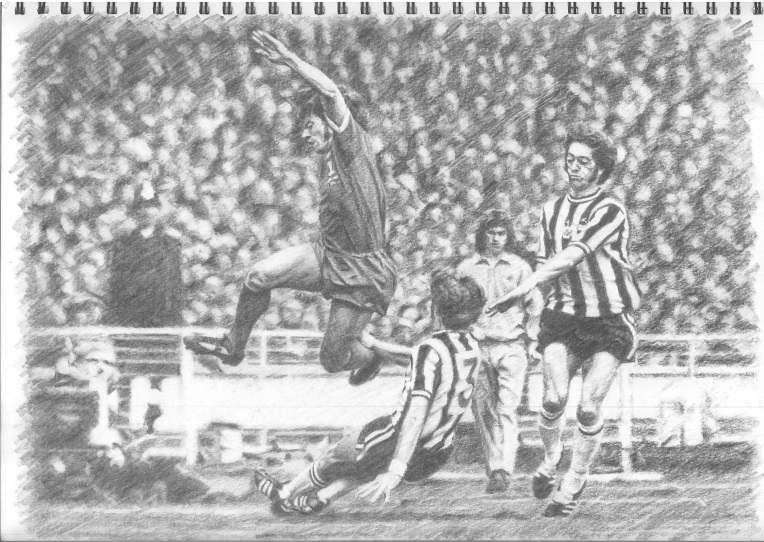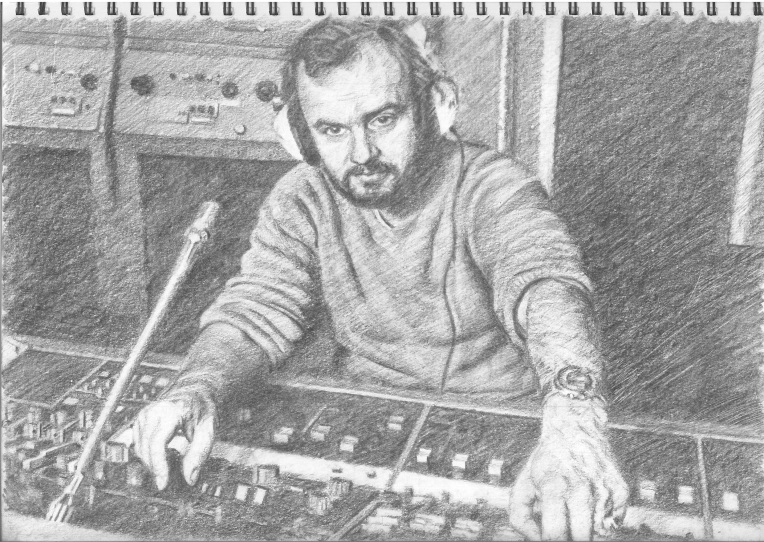Continuing with the Seventies project and another selection of drawings, the latest to be processed with reference to memories retained from growing up.
First up are a pair of stills from the film (movie) ‘Thunderbolt and Lightfoot’, which I recall seeing on television for the first time (it became what seemed like an annual event for a period of a few early-Eighties’ years) in 1979, sometime around the August Bank Holiday which was also the time John Peel, as featured previously, was mentioning his 40th birthday. I obviously enjoyed the film a great deal, enough to return to watch it numerous times, and can remember in particular its sun-bleached aesthetic and those scenes near the conclusion of the tale featuring a car journey between Clint Eastwood‘s ‘Thunderbolt’ and [spoiler alert] a dying ‘Lightfoot’ (Jeff Bridges, who became a real favourite actor of mine).
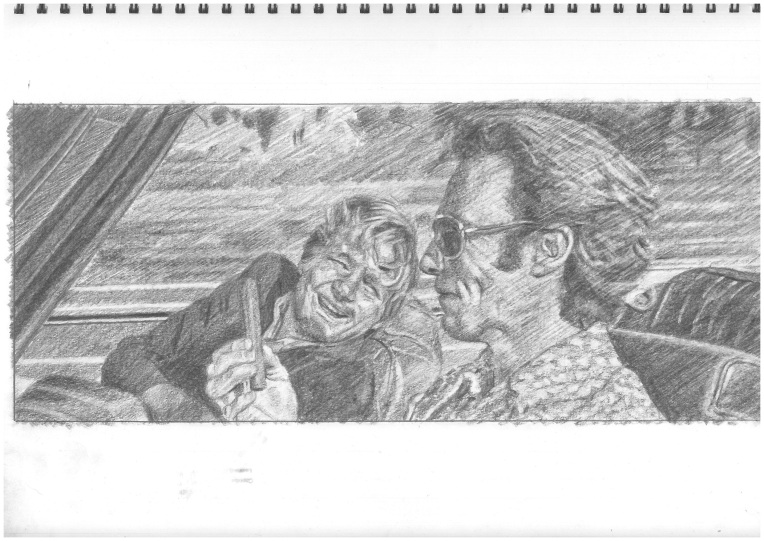
‘Thunderbolt and Lightfoot #1’
graphite and putty eraser on Seawhite cartridge paper/A3 (42 x 30cm)
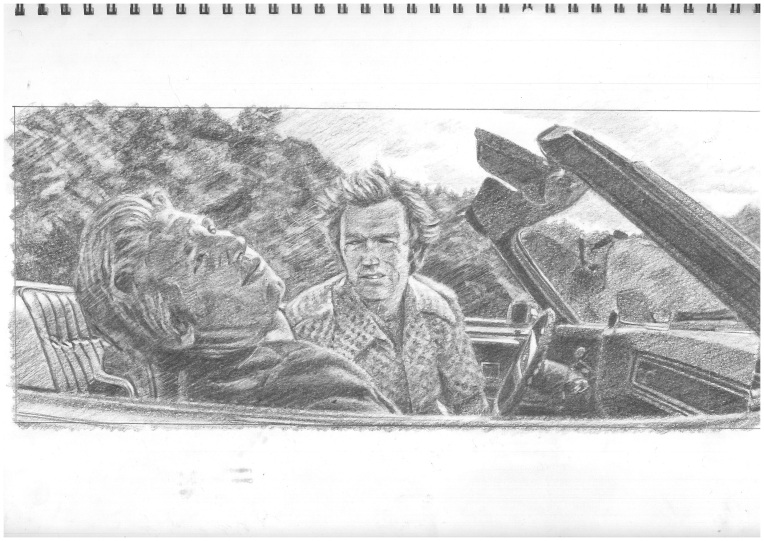
‘Thunderbolt and Lightfoot #2’
graphite and putty eraser on Seawhite cartridge paper/A3 (42 x 30cm)
Next, a drawing sourced from an original image that graced a number of the front covers of Wrexham FC‘s match programmes towards the latter part of 1977 and which features the central figure of Bobby Shinton celebrating the single goal that defeated Bristol City in a Football League Cup Third Round tie played at the Racecourse Ground on Wednesday 26th October, a match I attended in the company of my father and more than 10,000 other spectators. Shinton, obviously the goalscorer, is accompanied by a couple of teammates, the late Johns Roberts and Lyons, with the dejected opponent being, I think, Gerry Sweeney.
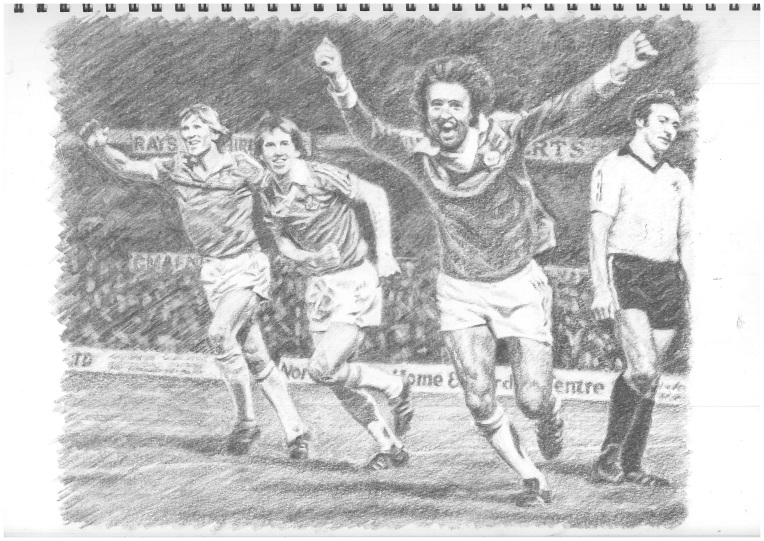
‘Bobby Shinton (Wrexham v Bristol City, 26/10/1977)’
graphite and putty eraser on Seawhite cartridge paper/A3 (42 x 30cm)
These were the great days when Third Division Wrexham were bona fide giant killers – Bristol City were enjoying a brief period in the First Division at this time – and would reach the quarter final stage of both the FA and League Cups during the 1977-78 season, the club’s most successful ever when they went on the be crowned champions of Division Three and earn promotion to the heady heights of English football’s second tier for the first and only time in their history before adding the Welsh Cup to the list of honours. The Racecourse became littered with the scalps of the ‘big’ clubs – Bristol City again and then Newcastle United were both treated to 3-goal drubbings in FA Cup tie replays in the new year – and it took the might of European champions Liverpool and a referee-assisted Arsenal to end those glorious cup runs, memories of which remain vivid, welcome as they are in these times of the club plumbing the nadir of their almost 100 years in the national league structure (I could go on…).
The particular significance of the Bobby Shinton drawing is the fact that I made a version of it back in the day, which was published in the art section of the children’s pages of the local (NE Wales) ‘Evening Leader’ newspaper – unfortunately, no tangible evidence of this remains but my parents did retain a cutting of an earlier artistic effort submitted to and published in the same ‘paper, which has subsequently come into my possession and here, accordingly, introduces/precedes the next drawing, one of my then-favourite footballer, Kevin Keegan, pictured here representing Liverpool FC in 1976, when the original drawing was made. Of particular and curious footballing interest, 1976-77 was Keegan’s last season at Liverpool before departing for new continental challenges at SV Hamburg – by the following season, he had been replaced by a player who went on to even greater achievements and legend at Liverpool, Kenny Dalglish, who downed Wrexham with a hat-trick at the Racecourse, another special occasion I was present to witness (and of which there is Youtube footage – never mind the game, look at the state of that vintage Seventies’ pitch!).
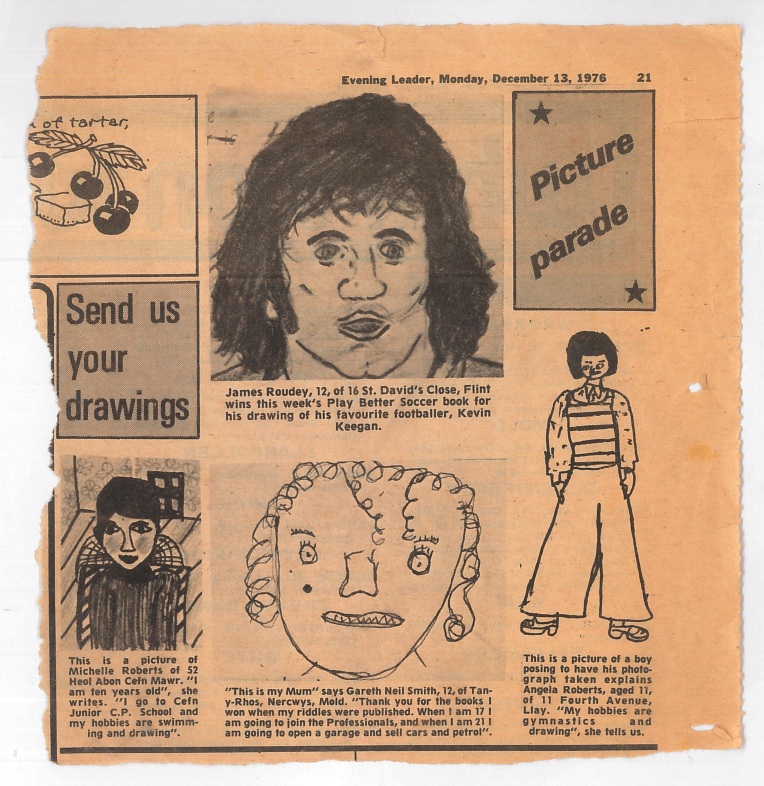
(note the Kevin Keegan drawing is credited to a ‘James Roudey’, which is not a misprint but an interpretation by a member of the newspaper staff based on what was obviously my illegible handwriting even then – how typical that I should find a way of taking something of the gloss off a public achievement!)
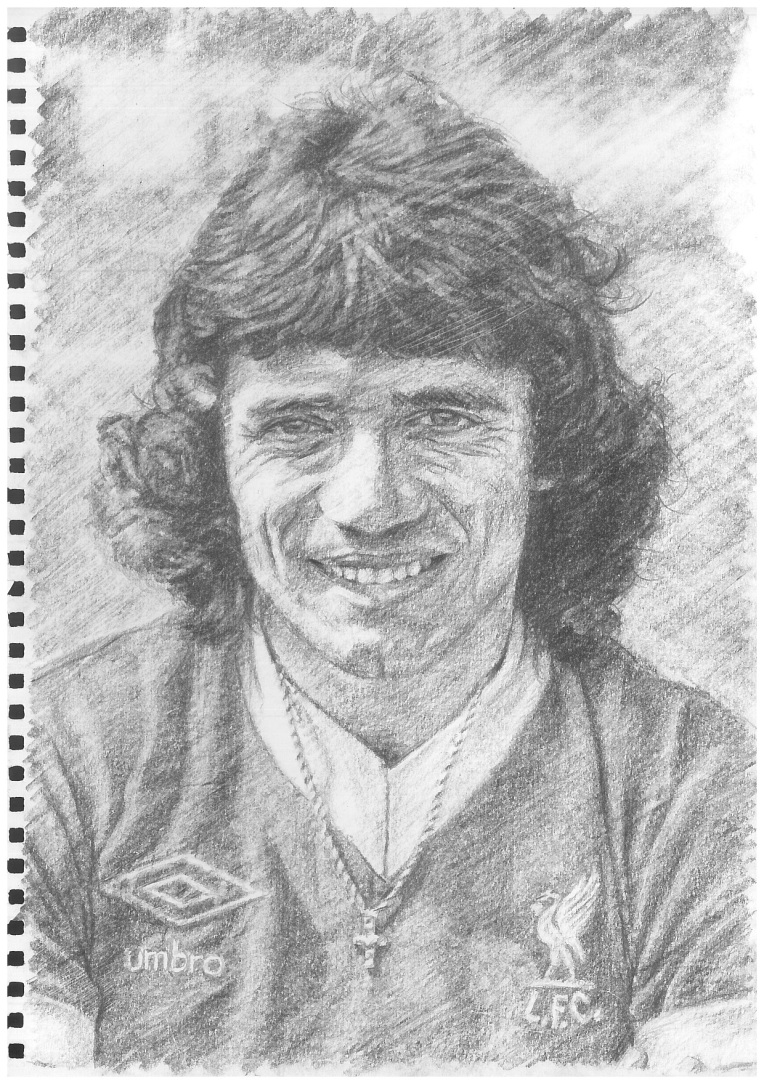
‘Kevin Keegan 1976’
graphite and putty eraser on cartridge paper/A4 (30 x 21cm)

